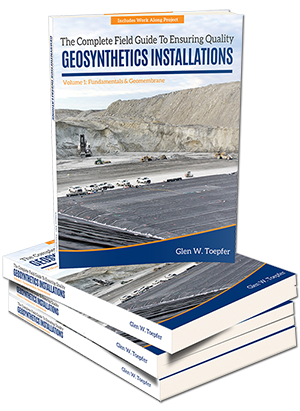While the origins of old adage “Break A Leg” are hotly debated in theatrical circles the message is clear: “Good Luck, have a great performance, give a compelling show,” and that is exactly what Geosynthetics 2015 did!
Geosynthetics 2015 was an enjoyable opportunity to chat with familiar and new colleagues from around the world. The co-location with the International Erosion Control Association (IECA) conference seemed to generate a lot of crossover interest and discussions. There were some great debates, enlightening discussions and much thought provoking content throughout the conference. I only wish I could have attended all of the sessions.
Here are some of the session highlights that still have me thinking:
- A swimming pool analogy was used in reference to containment systems, and the following questions were posed: How satisfied would you be with the purchase of a pool that leaked?
- Should the community expect leaks in containment systems? Is this even a fair comparison given the size of the average pool?
- Design of geosynthetic containment systems is critical. A key thing I learned is that soil erosion and sedimentation control designs are in some instances regulated such that only engineers certified in design of these controls can actually perform the design. Wow! There are no such restrictions that I am aware of for geosynthetics containment designers…should there be?
- A related and mind boggling question: Which of the following is the most important aspect for obtaining a soundly constructed containment system: design, subgrade construction, geosynthetics installation, geosynthetics installation CQA, bare geomembrane electrical leak location surveys (ELLS), or ELLS upon completion of cover material installation?
- There are technologies and practices available that dramatically increase the likelihood of leakage rates approaching zero, yet they are seldom used on projects. Examples include the Geosynthetics Research Institutes GM14, GM20, and GM29 for reducing the frequency of destructive sampling (thereby reducing the amount of repairs, which are commonly performed with an inferior weld), electric leak location surveys, and designs implementing prefabricated boot structures.
- So why are implementation rates low? Should this be changed? If so, how do we change it?
- Secondary containment units are seldom tested to ensure they are functioning properly and actually able to detect a leak.
- Should secondary containment systems be tested? If so, how?
- Education, and continuing the focus on educating industry professionals is a requirement for the long-term success of geosynthetics projects. The value of education cannot be overstated!
- Who do you feel needs training, and in what areas?
- What value do you place on certification programs for CQA technicians, and installers/installation technicians?
- Certain countries (such as Germany and Australia) have strict requirements for geosynthetics installations that approach zero-leaks. Various discussions were presented on whether zero leaks is achievable, and practical.
What are your thoughts? I see more than a few sleepless nights ahead pondering all of these points.
On a Personal Note
For me, personally, the show was a huge success. On the first day, I presented two technical session topics (Extrusion Welds – The Good, the Bad, and the Ugly and Covering Your Assets – Construction Quality Assurance) and participated in The Possibility of Zero Leak panel discussion, all before noon.
The response was tremendous! The audience interaction and excellent questions helped make the Zero Leak panel discussion successful. Another shout out here to Shabbir Pittawala from Arizona Public Service (APS) who was instrumental in the panel discussion as well as my CQA paper. Thank you to everyone who participated and for the warm reception!
The second and third (final) days were successful in a multitude of ways. Response to the release of my book (The Complete Field Guide to Ensuring Quality Geosynthetics Installations) was phenomenal, with sales jumping out of the gate at the start of the trade show. At my booth, walking the show and attending sessions, the interaction with colleagues was delightful, whether I was sharing insights with them or they were imparting their knowledge to me.
I would like to thank everyone involved in putting together such a fabulous conference. You did a tremendous job! It is so important for us to take time to gather as an industry and share our successes and lessons learned. A rising tide raises all boats. If we grow together we can help better our industry for the future.



